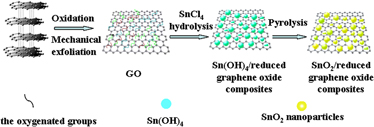Crossref Citations
This article has been cited by the following publications. This list is generated based on data provided by
Crossref.
Wang, Xiujuan
Wang, Gang
Zhai, Gaohong
and
Wang, Hui
2014.
Preparation and electrochemical evaluation of NiO nanoplatelet-based materials for lithium storage.
Journal of Materials Research,
Vol. 29,
Issue. 13,
p.
1393.
Wu, Songping
Xu, Rui
Lu, Mingjia
Ge, Rongyun
Iocozzia, James
Han, Cuiping
Jiang, Beibei
and
Lin, Zhiqun
2015.
Graphene‐Containing Nanomaterials for Lithium‐Ion Batteries.
Advanced Energy Materials,
Vol. 5,
Issue. 21,
Srivastava, Manish
Singh, Jay
Kuila, Tapas
Layek, Rama K.
Kim, Nam Hoon
and
Lee, Joong Hee
2015.
Recent advances in graphene and its metal-oxide hybrid nanostructures for lithium-ion batteries.
Nanoscale,
Vol. 7,
Issue. 11,
p.
4820.
Gao, Renmei
Zhang, Haijiao
Yuan, Shuai
Shi, Liyi
Wu, Minghong
and
Jiao, Zheng
2016.
Controllable synthesis of rod-like SnO2 nanoparticles with tunable length anchored onto graphene nanosheets for improved lithium storage capability.
RSC Advances,
Vol. 6,
Issue. 5,
p.
4116.
Cui, Jiang
Xu, Zheng-Long
Yao, Shanshan
Huang, Jiaqiang
Huang, Jian-Qiu
Abouali, Sara
Garakani, Mohammad Akbari
Ning, Xiaohui
and
Kim, Jang-Kyo
2016.
Enhanced conversion reaction kinetics in low crystallinity SnO2/CNT anodes for Na-ion batteries.
Journal of Materials Chemistry A,
Vol. 4,
Issue. 28,
p.
10964.
Qu, Yunteng
Gao, Yunzhi
Wang, Long
Rao, Jiancun
and
Yin, Geping
2016.
Mild Synthesis of Pt/SnO2/Graphene Nanocomposites with Remarkably Enhanced Ethanol Electro‐oxidation Activity and Durability.
Chemistry – A European Journal,
Vol. 22,
Issue. 1,
p.
193.
Jiao, Zheng
Gao, Renmei
Tao, Haihua
Yuan, Shuai
Xu, Laiqiang
Xia, Saisai
and
Zhang, Haijiao
2016.
Intergrown SnO2–TiO2@graphene ternary composite as high-performance lithium-ion battery anodes.
Journal of Nanoparticle Research,
Vol. 18,
Issue. 10,
Chen, Xuefang
Huang, Ying
Zhang, Kaichuang
Feng, Xuansheng
and
Wei, Chao
2017.
Novel hierarchical flowers-like Sn3O4 firstly used as anode materials for lithium ion batteries.
Journal of Alloys and Compounds,
Vol. 690,
Issue. ,
p.
765.
Kim, Meeree
Hwang, Hee Min
Park, G. Hwan
and
Lee, Hyoyoung
2017.
Graphene-based composite electrodes for electrochemical energy storage devices: Recent progress and challenges.
FlatChem,
Vol. 6,
Issue. ,
p.
48.
Shao, Qingguo
Tang, Jie
Sun, Yige
Li, Jing
Zhang, Kun
Yuan, Jinshi
Zhu, Da-Ming
and
Qin, Lu-Chang
2017.
Unique interconnected graphene/SnO2nanoparticle spherical multilayers for lithium-ion battery applications.
Nanoscale,
Vol. 9,
Issue. 13,
p.
4439.
Zhang, Yinan
Qi, Tao
Wang, Qian
Zhang, Yongchao
Wang, Di
and
Zheng, Wei
2017.
Preparation of SnO2/rGO Photoanode and Its Effect on the Property of Dye-Sensitized Solar Cells.
IEEE Journal of Photovoltaics,
Vol. 7,
Issue. 1,
p.
399.
Ren, Lu
Yao, Yang
Wang, Kangyan
Li, Site
Zhu, Kunjie
and
Liu, Jun
2019.
Novel one-step in situ growth of SnO2 quantum dots on reduced graphene oxide and its application for lithium ion batteries.
Journal of Solid State Chemistry,
Vol. 273,
Issue. ,
p.
128.
Sehrawat, Poonam
Abid, Abid
Islam, Saikh S.
Mauger, Alain
and
Julien, Christian M.
2020.
Nanostructured Graphene Oxide-Based Hybrids as Anodes for Lithium-Ion Batteries.
C,
Vol. 6,
Issue. 4,
p.
81.
González, Elsa Nadia Aguilera
Puente, Diana Sofía Leija
Muñiz, Francisco Mherande Cuevas
Flores, Sofía Estrada
and
Martínez-Luévanos, Antonia
2021.
Electrochemical Fabrication of a GO-NiO/AISI 316L Electrode and Its Evaluation for Glucose Detection.
International Journal of Electrochemical Science,
Vol. 16,
Issue. 6,
p.
21066.
Oluwole, Adewumi Olufemi
and
Olatunji, Olatunde Stephen
2022.
Photocatalytic degradation of tetracycline in aqueous systems under visible light irridiation using needle-like SnO2 nanoparticles anchored on exfoliated g-C3N4.
Environmental Sciences Europe,
Vol. 34,
Issue. 1,
Folorunso, Oladipo
Sadiku, Rotimi
Hamam, Yskandar
and
Ray, Suprakas Sinha
2022.
An investigation of copper oxide-loaded reduced graphene oxide nanocomposite for energy storage applications.
Applied Physics A,
Vol. 128,
Issue. 1,
Dhawale, Somnath C.
Digraskar, Renuka V.
Ghule, Anil V.
and
Sathe, Bhaskar R.
2024.
Noble metal-free CZTS electrocatalysis: synergetic characteristics and emerging applications towards water splitting reactions.
Frontiers in Chemistry,
Vol. 12,
Issue. ,
Peng, Lizeng
Bahadoran, Ashkan
Sheidaei, Sina
Joolaei Ahranjani, Parham
Kamyab, Hesam
Oryani, Bahareh
Sadia Arain, Sadaf
and
Rezania, Shahabaldin
2024.
Magnetic graphene oxide supported tin oxide (SnO) nanocomposite as a heterogeneous catalyst for biodiesel production from soybean oil.
Renewable Energy,
Vol. 224,
Issue. ,
p.
120050.
